Angelo Basile
Unsupervised Ranking and Aggregation of Label Descriptions for Zero-Shot Classifiers
Apr 20, 2022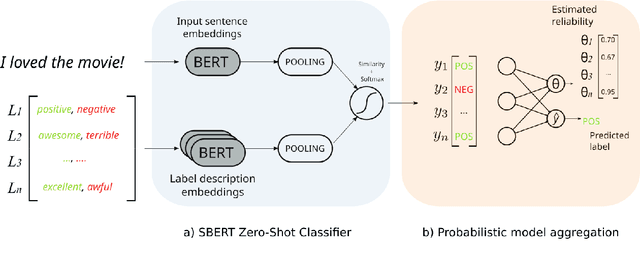



Abstract:Zero-shot text classifiers based on label descriptions embed an input text and a set of labels into the same space: measures such as cosine similarity can then be used to select the most similar label description to the input text as the predicted label. In a true zero-shot setup, designing good label descriptions is challenging because no development set is available. Inspired by the literature on Learning with Disagreements, we look at how probabilistic models of repeated rating analysis can be used for selecting the best label descriptions in an unsupervised fashion. We evaluate our method on a set of diverse datasets and tasks (sentiment, topic and stance). Furthermore, we show that multiple, noisy label descriptions can be aggregated to boost the performance.
Active Few-Shot Learning with FASL
Apr 20, 2022
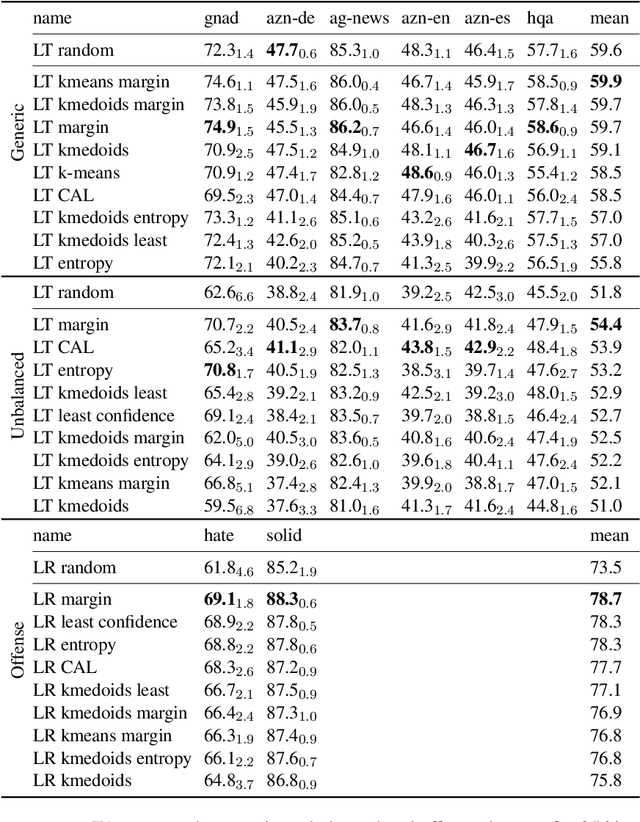

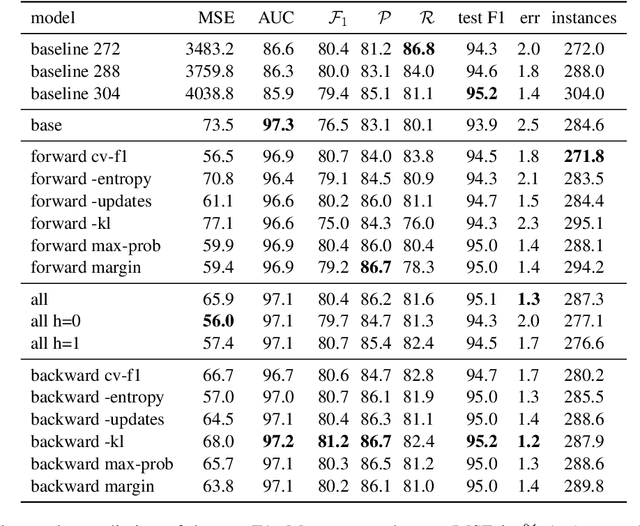
Abstract:Recent advances in natural language processing (NLP) have led to strong text classification models for many tasks. However, still often thousands of examples are needed to train models with good quality. This makes it challenging to quickly develop and deploy new models for real world problems and business needs. Few-shot learning and active learning are two lines of research, aimed at tackling this problem. In this work, we combine both lines into FASL, a platform that allows training text classification models using an iterative and fast process. We investigate which active learning methods work best in our few-shot setup. Additionally, we develop a model to predict when to stop annotating. This is relevant as in a few-shot setup we do not have access to a large validation set.
You Write Like You Eat: Stylistic variation as a predictor of social stratification
Jul 16, 2019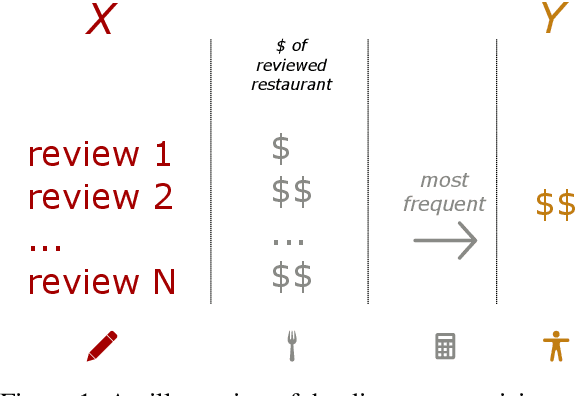

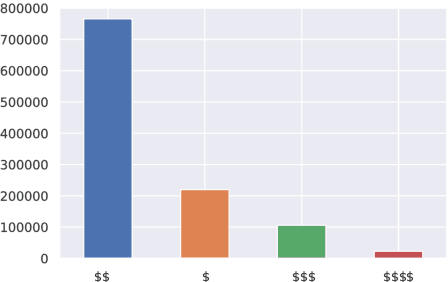
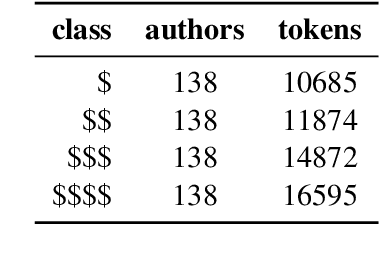
Abstract:Inspired by Labov's seminal work on stylistic variation as a function of social stratification, we develop and compare neural models that predict a person's presumed socio-economic status, obtained through distant supervision,from their writing style on social media. The focus of our work is on identifying the most important stylistic parameters to predict socio-economic group. In particular, we show the effectiveness of morpho-syntactic features as stylistic predictors of socio-economic group,in contrast to lexical features, which are good predictors of topic.
N-GrAM: New Groningen Author-profiling Model
Jul 12, 2017



Abstract:We describe our participation in the PAN 2017 shared task on Author Profiling, identifying authors' gender and language variety for English, Spanish, Arabic and Portuguese. We describe both the final, submitted system, and a series of negative results. Our aim was to create a single model for both gender and language, and for all language varieties. Our best-performing system (on cross-validated results) is a linear support vector machine (SVM) with word unigrams and character 3- to 5-grams as features. A set of additional features, including POS tags, additional datasets, geographic entities, and Twitter handles, hurt, rather than improve, performance. Results from cross-validation indicated high performance overall and results on the test set confirmed them, at 0.86 averaged accuracy, with performance on sub-tasks ranging from 0.68 to 0.98.
 Add to Chrome
Add to Chrome Add to Firefox
Add to Firefox Add to Edge
Add to Edge